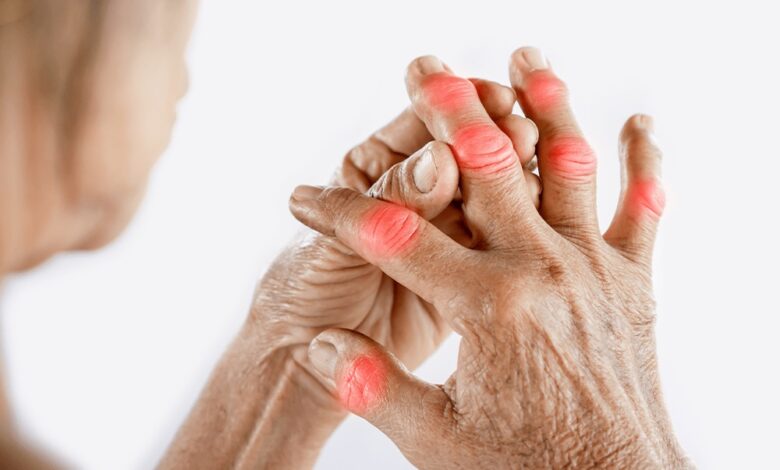Managing Arthritis Pain Through Lifestyle Changes: A Comprehensive Guide

Arthritis is a common condition that causes inflammation, stiffness, and pain in the joints, affecting millions of people worldwide. Whether you’re dealing with osteoarthritis, rheumatoid arthritis, or another form, managing the pain and improving your quality of life can sometimes feel challenging. While medications and treatments are essential, making positive lifestyle changes can significantly help alleviate symptoms and improve your overall well-being. In this article, we’ll explore how lifestyle changes can make a big difference in managing arthritis pain.
1. Maintain a Healthy Weight
One of the most effective ways to manage arthritis pain is by maintaining a healthy weight. Excess weight puts additional stress on weight-bearing joints, especially the knees, hips, and spine. This added pressure can exacerbate arthritis symptoms and accelerate joint damage.
By maintaining a healthy weight, you can reduce the strain on your joints, which helps to alleviate pain and prevent further damage. A balanced diet, combined with regular physical activity, is key to achieving and maintaining a healthy weight. If weight loss is necessary, even a modest reduction in weight (around 5-10%) can significantly decrease joint pain and improve mobility.
2. Stay Active: Exercise for Joint Health
While it might seem counterintuitive, exercise is one of the most effective ways to manage arthritis pain. Physical activity strengthens the muscles surrounding the joints, providing better support and reducing the load on the affected areas. Additionally, exercise increases flexibility, improves joint mobility, and helps reduce inflammation.
Low-impact exercises such as swimming, walking, yoga, and cycling are excellent choices for individuals with arthritis. These activities help keep joints flexible without putting too much stress on them. Aim for at least 30 minutes of moderate exercise most days of the week. If you’re unsure where to start, consult with your healthcare provider or a physical therapist for guidance on exercises tailored to your needs.
3. Adopt an Anti-Inflammatory Diet
What you eat can play a significant role in managing arthritis pain, particularly if you have inflammatory types of arthritis such as rheumatoid arthritis. An anti-inflammatory diet can help reduce inflammation in the body, which is often a contributing factor to joint pain and stiffness.
Foods that are rich in antioxidants, omega-3 fatty acids, and vitamins can help combat inflammation and promote joint health. Some key foods to include in your diet are:
- Fatty fish (salmon, mackerel, sardines): High in omega-3 fatty acids, which help reduce inflammation.
- Leafy greens (spinach, kale): Packed with vitamins and minerals that promote overall health.
- Nuts and seeds (walnuts, chia seeds): Good sources of omega-3s and healthy fats.
- Berries (blueberries, strawberries): Rich in antioxidants, which help fight inflammation.
- Olive oil: Contains oleocanthal, a compound with anti-inflammatory properties.
At the same time, try to limit or avoid foods that may promote inflammation, such as processed foods, sugary snacks, and excessive red meat.
4. Manage Stress: Reduce the Impact of Stress on Arthritis
Chronic stress can exacerbate arthritis symptoms by increasing inflammation in the body and heightening pain sensitivity. Managing stress is essential for people with arthritis as it helps reduce flare-ups and improve emotional well-being.
To manage stress effectively, try incorporating stress-reduction techniques into your daily routine:
- Meditation: Mindfulness practices and guided meditation can help calm your mind and reduce stress.
- Deep breathing exercises: These can help reduce tension and promote relaxation.
- Progressive muscle relaxation: This technique involves tensing and then relaxing different muscle groups to alleviate stress.
- Hobbies: Engaging in hobbies you enjoy, such as reading, painting, or gardening, can provide a positive outlet for stress.
Additionally, ensuring that you maintain a healthy work-life balance and get adequate rest is essential for minimizing stress levels.
5. Get Enough Rest and Sleep
Arthritis pain can make it difficult to sleep well, but good quality sleep is crucial for managing pain and supporting joint health. During sleep, the body repairs and regenerates tissues, which is especially important when living with arthritis. Inadequate rest can lead to heightened pain sensitivity and longer recovery times.
To improve your sleep quality:
- Establish a bedtime routine: Going to bed and waking up at the same time each day helps regulate your sleep cycle.
- Create a comfortable sleep environment: A supportive mattress and pillows can help you find a comfortable sleeping position. If joint pain affects your sleep, consider using pillows to cushion your joints and keep them aligned.
- Limit caffeine and electronics: Avoid consuming caffeine or using electronic devices at least an hour before bed, as they can interfere with your ability to fall asleep.
- Use relaxation techniques: Practices like deep breathing or light stretching before bed can help you unwind.
Good sleep not only helps manage arthritis pain but also improves overall mood and mental health, making it easier to cope with the challenges of arthritis.
6. Consider Physical Therapy
Physical therapy is an essential component of managing arthritis pain. A physical therapist can work with you to develop a personalized exercise program designed to improve joint mobility, strengthen muscles, and alleviate pain. They may also teach you proper posture and body mechanics to reduce strain on your joints during daily activities.
In addition to prescribed exercises, physical therapy can include hands-on treatments such as joint mobilization, heat and cold therapy, and other modalities to help reduce inflammation and improve joint function.
7. Use Heat and Cold Therapy
Heat and cold therapies are simple yet effective ways to manage arthritis pain. Both methods can help reduce inflammation, relieve pain, and improve mobility.
- Heat therapy: Applying a warm compress or heating pad can help relax stiff muscles and joints, improve blood circulation, and reduce pain. A warm bath can also be soothing for achy joints.
- Cold therapy: Applying ice packs or cold compresses can reduce inflammation and numb the pain in a specific area. Cold therapy is particularly helpful during an arthritis flare-up when inflammation is high.
Alternate between heat and cold depending on what feels best for your body and the area of pain.
8. Stay Hydrated
Hydration plays a vital role in maintaining joint health. Drinking enough water helps keep the cartilage in your joints lubricated, reducing friction and stiffness. Dehydration can cause joints to become dry and more prone to injury or discomfort.
Aim to drink at least 8 glasses of water a day. If you have arthritis, particularly osteoarthritis, staying hydrated can help keep your joints functioning smoothly.
9. Consider Supplements
Certain dietary supplements have been shown to support joint health and reduce arthritis symptoms. While supplements should not replace prescribed medications, they can be a useful addition to your treatment plan. Some commonly recommended supplements for arthritis include:
- Glucosamine and chondroitin: These compounds help support cartilage health and may reduce joint pain and stiffness.
- Omega-3 fatty acids: These can help reduce inflammation and improve joint function.
- Turmeric: Contains curcumin, a compound known for its anti-inflammatory properties.
Before adding supplements to your routine, consult your healthcare provider to ensure they are safe and appropriate for you.
10. Wear Proper Footwear
If you have arthritis in your knees, hips, or back, wearing the right shoes is crucial for reducing pain and maintaining proper alignment. Shoes with proper arch support and cushioning can help absorb shock and reduce strain on your joints.
Avoid wearing high heels or shoes that lack support, as they can exacerbate joint pain. Orthotic insoles or custom-made shoes may also be beneficial, especially if you experience pain in the lower extremities.
Final Thoughts: Take Control of Your Arthritis Pain
Managing arthritis pain is not about completely eliminating discomfort, but about finding effective strategies to reduce pain, improve function, and enhance your quality of life. By incorporating these lifestyle changes—such as maintaining a healthy weight, staying active, managing stress, eating an anti-inflammatory diet, and prioritizing rest—you can take control of your arthritis and live a more comfortable, fulfilling life.
Remember that managing arthritis is a journey, and it’s important to work closely with your healthcare team to develop a treatment plan tailored to your needs. With patience and persistence, lifestyle changes can make a significant difference in how you feel each day.




